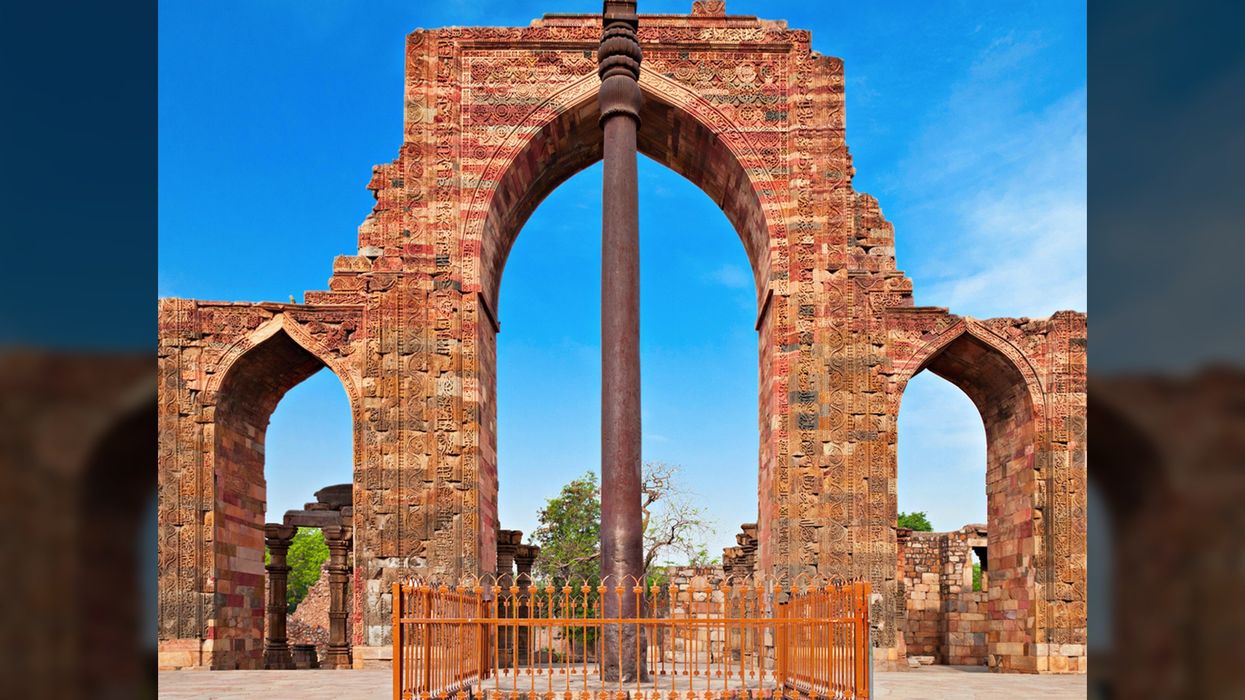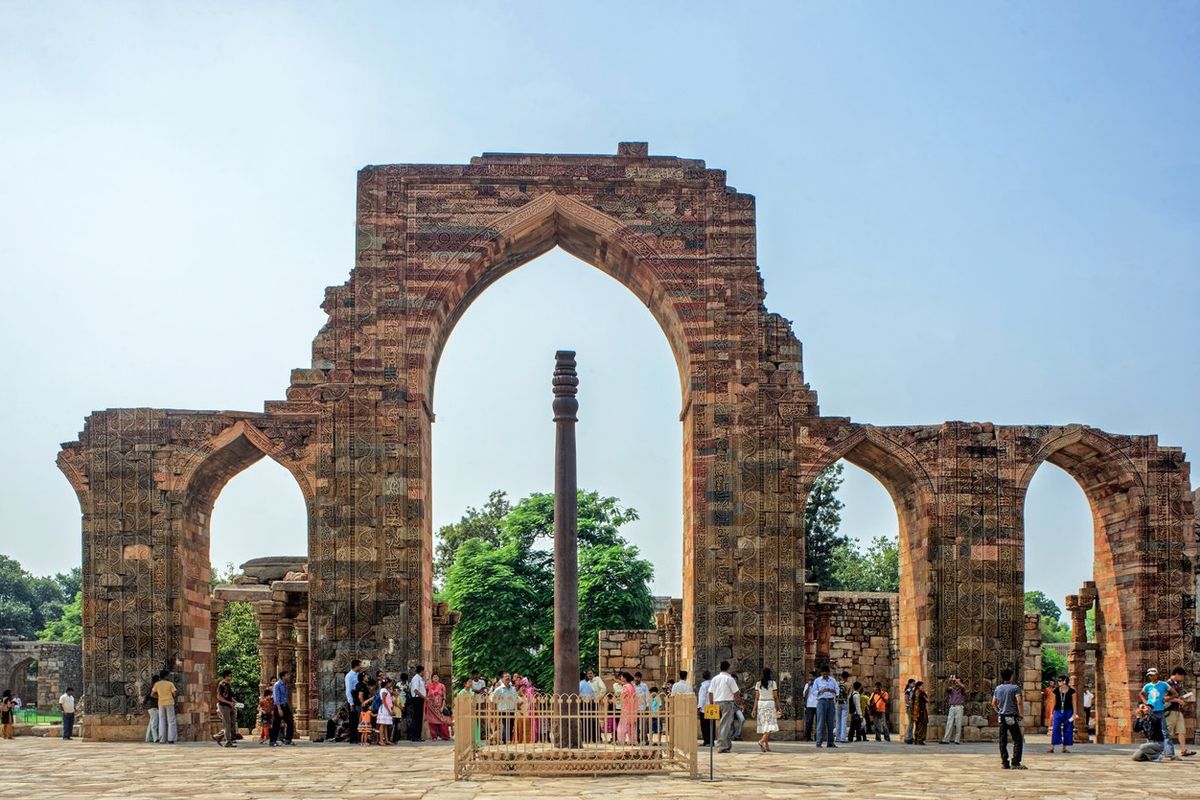Science & Tech
Harriet Brewis
May 22, 2024

Delhi's iconic Iron Pillar has mystified experts for more than a century
(iStock)
The mystery behind an “awe-inspiring” metal column that has perplexed experts for more than a century has finally been solved.
The 1,600-year-old pillar stands pristine amid the ruins of a world heritage-listed temple in Delhi. And, despite being made of iron, it never rusts.
This goes against everything we know about the metal, which is notoriously susceptible to the elements – developing a coat of reddish-brown iron oxide at the merest hint of water.
The pillar’s extraordinary resilience to erosion has invited all kinds of theories over the years: could it be the evidence of a lost, advanced civilisation? Or was it left for us by aliens?
Suffice it to say, neither hypothesis has borne fruit. Instead, the structure’s power is all down to ancient Indians’ skills.
Researchers meticulously analysed the pillar to work out the complex chemistry at work beneath its dull grey surface.
And, finally, in a new study, they revealed just how the marvel was made.

The towering column stands at around 7.3 metres (almost 24 feet) tall and 41.6cm (around 16.4 inches) in diameter, tapering to around 30.5cm (12 inches) at the top, where an ornamental structure sits.
And despite being made of solid wrought iron weighing 6.5 tonnes, it was dragged across India several times over the centuries as part of the spoils of battle, the New York Post reports.
Describing the towering monument in around 1333 AD, the iconic Moroccan explorer Ibn Battista allegedly wrote: “In the centre of [Delhi] mosque is the awe-inspiring column of which nobody knows of what metal it is constructed.
“One of their learned men told me that it is called ‘Haft Jûsh,’ which means ‘seven metals’, and that it is composed of these seven. A part of this column, of a finger’s length, has been polished, and this polished part gives out a brilliant gleam. Iron makes no impression on it.”
Several inscriptions have been etched onto its surface, the oldest of which – a six-line verse – is written in the ancient Indian language Brahmi and names a king called Chandra.
Researchers say the poetic style and form of Sanskrit text used for this engraving suggest it was most likely inscribed during the reign of King Chandragupta II Vikramaditya, who ruled the Gupta empire between 375 and 415AD.
The inscription describes the king as a devotee of Vishnu, and says he dedicated the pillar to the god on a hill called Viṣṇupada, which translates as "hill of the footprint of Viṣṇu".
The location of this hill remains subject to debate, though it is generally understood to have been among the Udayagiri cave temples in Madhya Pradesh.
So what made the pillar so resistant?
In their study, published in the journal Applied Surface Science Advances, experts at the University of Delhi wrote: “The pillar, renowned for its craftsmanship, flawless surface and resistance to corrosion behaviour, is a prominent monument demonstrating an indisputable record of the ancient Indian metallurgical and engineering marvel.”
The paper details how India’s ancient metal smiths purified their ironwork to a remarkable 98 per cent.
Their methods were a closely guarded secret, handed down through generations of the same families, according to The Post.
The heat used during these processes was not hot enough to entirely melt the metal so, instead, it was extracted as a “soft spongy mass which was hammered to be shaped into the desired objects,” the study’s authors explain.
Lumps of this spongy iron were then laid out and repeatedly hammered to separate the fluidic slag (mineral impurities), forming it into a sequence of “pancake” shapes.
“The heated iron pancakes were then placed one over another, and both were joined by hammering using hand-held hammers,” they write.
Microstructural analysis of this forged iron structure revealed an extraordinary convergence of properties that resulted in the metal’s resistance to corrosion.
Furthermore, the hammering did not remove the slag evenly – it left a patchwork of tiny, phosphorus-rich particles spaced among the iron.
This created a network of electrical conductors, triggering a series of chemical reactions, the researchers say.
“The corrosion resistant property of the sample of Iron Pillar in Delhi was mainly due to the mode of its fabrication resulting in high slag inclusions dispersed in three dimensions around the metal,” the study concludes.
“The P (phosphorus) present in FePO4 (ferric phosphate) is oxidised to phosphate which acts as an inhibitor and promotes the formation of protective oxide films for preventing corrosion.
“The protective film on the pillar decreases the corrosion rate from 0.395 mm to 0.040 mm per year.”
So there you have it, mystery solved. But wouldn’t aliens have been more fun?
Sign up for our free Indy100 weekly newsletter
How to join the indy100's free WhatsApp channel
Have your say in our news democracy. Click the upvote icon at the top of the page to help raise this article through the indy100 rankings
Top 100
The Conversation (0)













